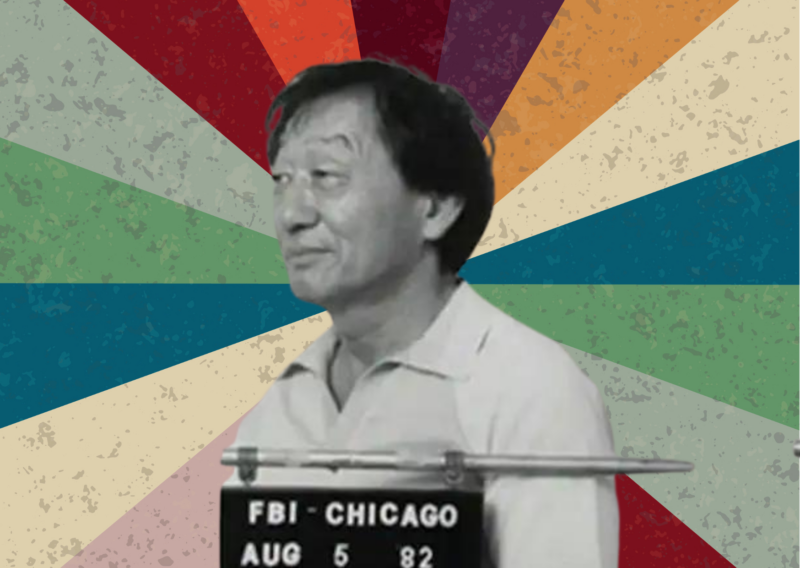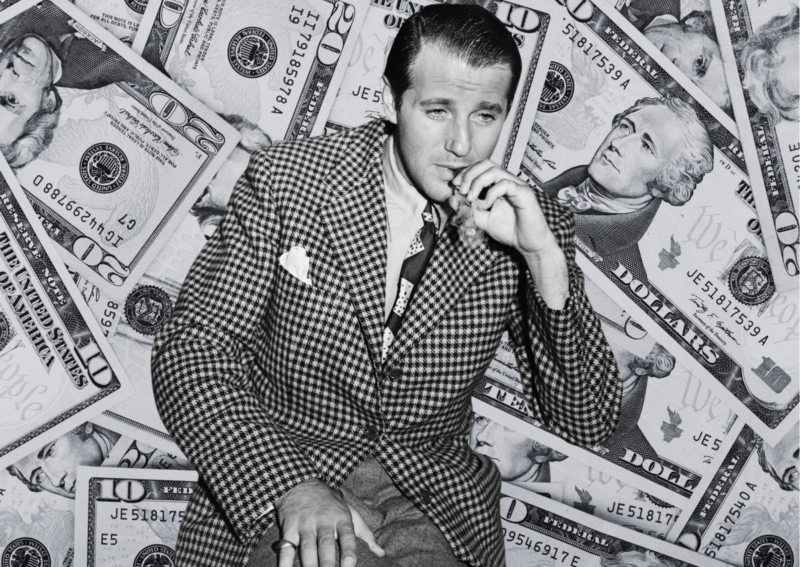The American Mafia, often synonymous with Italian Americans, is a notorious criminal organization with deep roots in the United States.
However, it also included influential members from various ethnic backgrounds who played pivotal roles in shaping its operations and history, especially Jewish.
Let us see who the most prominent names are.
7. Shondor Birns

Shondor Birns, born in Czechoslovakia and brought to the United States as an infant, made a significant impact on Cleveland’s criminal underworld.
Known for his adept mediation skills, Birns was a key figure in negotiating disputes between gangsters and maintaining order within the ranks.
His criminal repertoire included running numbers, a popular form of illegal gambling at the time.
Birns’s influence extended across Cleveland, making him a well-known and respected figure in the underworld. His life came to a dramatic end in 1975 when he was killed in a car bombing, a testament to the violent world he navigated.
Birns left a lasting legacy in Cleveland’s criminal history, illustrating the diverse ethnic makeup of the American Mafia.
6. Murray “the Camel” Humphreys
Murray “the Camel” Humphreys, a Welsh immigrant, became a formidable player in Chicago’s crime scene.
He was a key figure in Al Capone’s Chicago Outfit, where his sharp intellect and strategic mind earned him the nickname “the Camel.”
Known for his legal manipulations and political influence, Humphreys played a crucial role in expanding and protecting the Outfit’s interests.
He was adept at bribing officials and manipulating legal proceedings to the Outfit’s advantage, ensuring their operations ran smoothly.
Humphreys’s legacy extends beyond his criminal activities; he inspired the character Tom Hagen in “The Godfather,” highlighting his significant influence in popular culture.
His ability to blend criminal prowess with political acumen made him a unique and powerful figure in the American Mafia.
5. Ken Eto

Ken Eto, a Japanese American who moved to Chicago post-WWII, made his mark in the underworld through a successful numbers game.
Eto’s operations were lucrative, making him a significant player in Chicago’s gambling scene.
However, his criminal career took a dramatic turn when he survived an assassination attempt, leading him to turn informant.
Eto’s testimonies were instrumental in bringing down multiple mobsters and corrupt police officers, showcasing the far-reaching implications of his cooperation with authorities.
His story is a remarkable example of survival and transformation within the Mafia, highlighting the complex and often dangerous lives led by its members.
4. Louis “Lepke” Buchalter
Louis “Lepke” Buchalter, a Jewish American from New York’s Lower East Side, was a notorious leader of Murder, Inc., an enforcement arm of the Mafia responsible for numerous contract killings.
Buchalter’s criminal activities extended beyond murder; he was deeply involved in labor racketeering and extortion, using violence and intimidation to control labor unions and businesses.
His ruthless methods ensured his dominance in the underworld but also attracted significant law enforcement attention.
Buchalter’s reign came to an end when he was convicted of murder and subsequently executed in 1944.
His life and crimes offer a stark glimpse into the violent and manipulative tactics used by the Mafia to exert control and influence. His leadership in Murder, Inc. remains one of the most infamous chapters in the history of organized crime.
3. Benjamin “Bugsy” Siegel

Benjamin “Bugsy” Siegel, a Jewish American from Brooklyn, New York, was a major architect in the development of the Las Vegas Strip.
Siegel’s vision and ambition led to the opening of the Flamingo Hotel, a landmark in the transformation of Las Vegas into a gambling mecca.
Known for his violent temper and bold nature, Siegel’s criminal activities extended beyond gambling; he was involved in bootlegging, drug trafficking, and murder.
His efforts to establish Las Vegas as a gambling hub were groundbreaking, although they also attracted significant risk and opposition.
Siegel’s life ended violently in 1947 when he was murdered, a testament to the dangerous world he inhabited.
Siegel’s legacy as a pioneering force in the development of Las Vegas endures, highlighting the diverse contributions of non-Italian members to the American Mafia.
2. Arnold “The Brain” Rothstein
Arnold “The Brain” Rothstein, a Jewish American born in New York City, was a mastermind behind some of the most significant criminal enterprises of his time.
Rothstein’s involvement in the Black Sox Scandal, where he orchestrated the fixing of the 1919 World Series, showcased his ability to manipulate and control high-stakes situations.
His operations in gambling, bootlegging, and narcotics made him a central figure in New York’s underworld.
Known for his organizational skills and strategic mind, Rothstein built connections with prominent gangsters, enhancing his influence and reach.
His legacy includes inspiring the character Meyer Wolfsheim in “The Great Gatsby,” underscoring his impact on both crime and culture.
Rothstein’s sophisticated approach to organized crime set a precedent for future Mafia operations, demonstrating the critical role of non-Italian members in the Mafia’s history.
1. Meyer Lansky
Meyer Lansky, a Jewish American born in Poland and raised in New York, was a mastermind behind the establishment of the national crime syndicate.
Lansky’s financial acumen earned him the reputation of being the “financial wizard” of organized crime.
He was instrumental in developing extensive gambling operations in Florida, the Caribbean, and Las Vegas, creating a vast network of lucrative enterprises.
Lansky’s ability to manage and launder money was unparalleled, making him an invaluable asset to the Mafia.
Lansky avoided long-term imprisonment, showcasing his skill in navigating legal challenges.
His contributions to the Mafia’s financial infrastructure were significant, solidifying his legacy as a pivotal figure in the history of organized crime.
Lansky’s life and career illustrate the critical role non-Italian members played in the American Mafia’s success.

